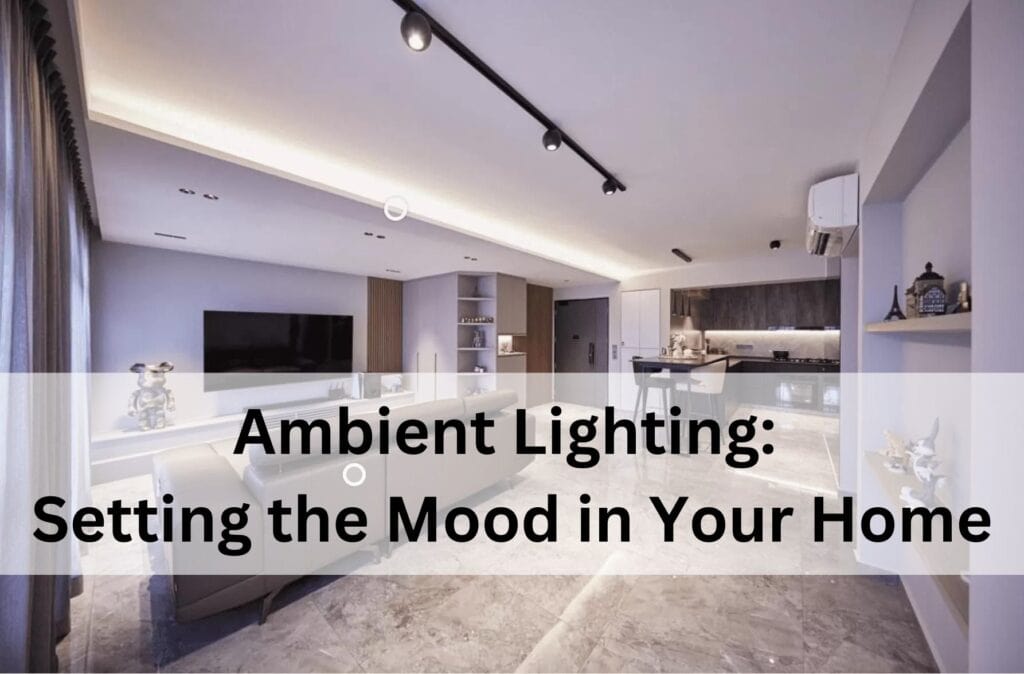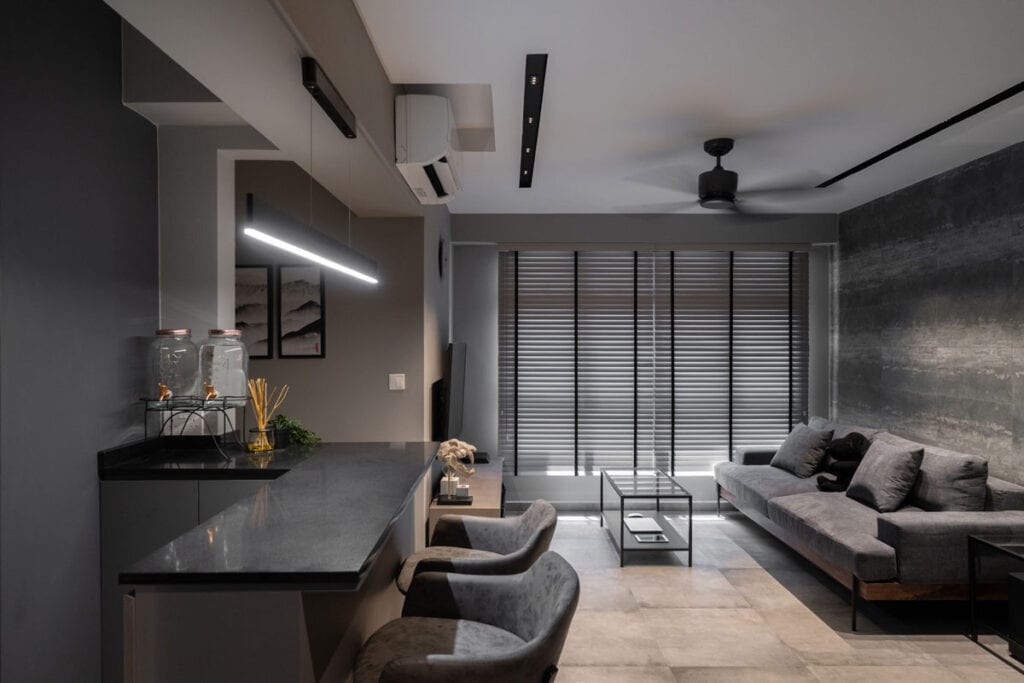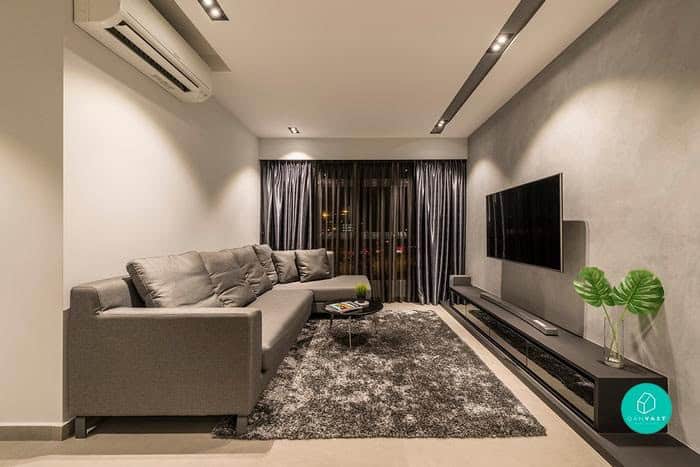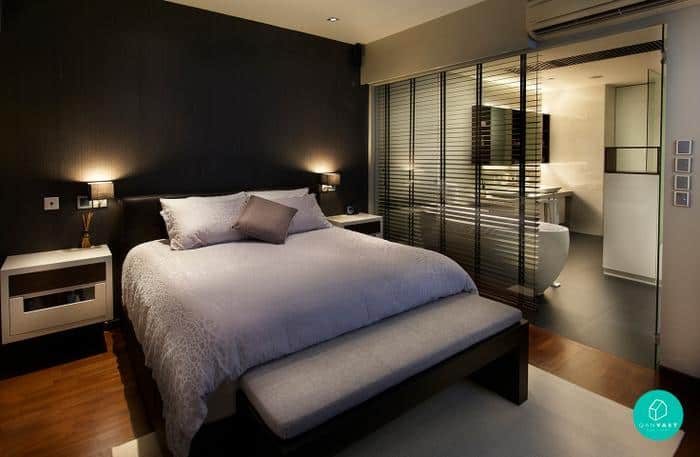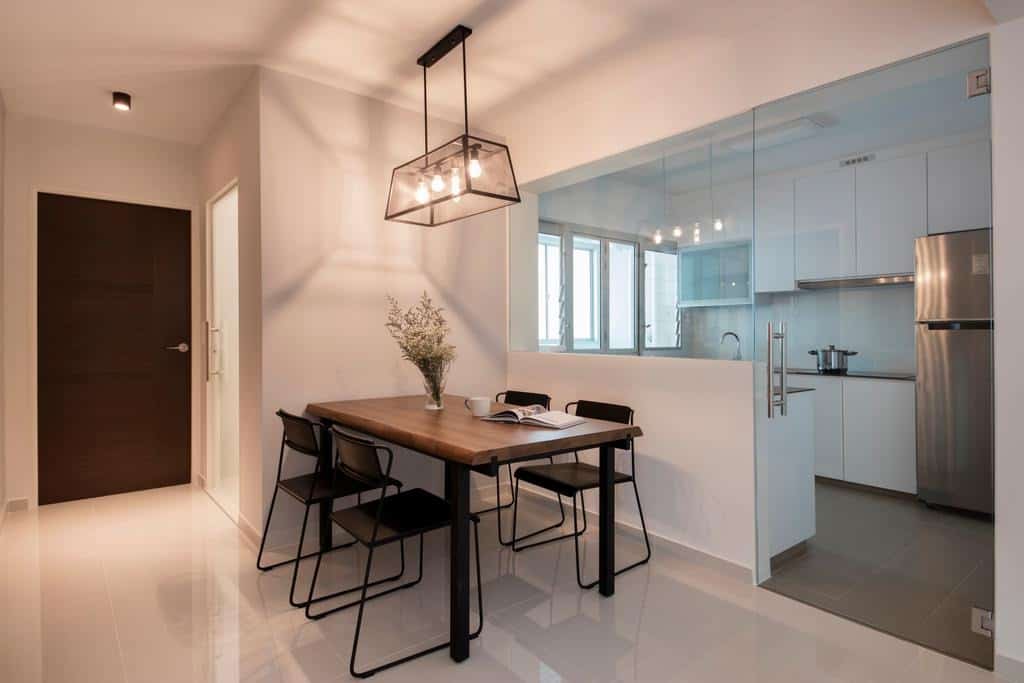How to Set the Perfect Mood with Ambient Lighting in Your Home
Ambient lighting, often referred to as general lighting, forms the foundation of any well-lit space. Unlike task lighting, which is directed toward specific areas, ambient lighting casts a broad, even illumination throughout the room. This type of lighting creates a soft, inviting glow that enhances the atmosphere of your home, providing both functionality and comfort. By strategically placing ambient light sources, you can effortlessly set the mood for relaxation, entertainment, or productivity.
Understanding the Basics of Ambient Lighting
Image Credit: Renonation / Arche Interior
Ambient lighting is more than just switching on a ceiling light; it involves carefully layering different light sources to create the perfect ambiance. This type of lighting considers several important elements, such as the brightness, color temperature, and type of light source.
- Brightness refers to how intense or dim the light is, impacting the overall feel of the space. Brighter lights make rooms feel open and energetic, while softer lighting creates a calm, intimate setting.
- Color temperature affects the warmth or coolness of the light. Warmer lights are typically yellow or orange, giving rooms a cozy feel, whereas cooler lights with a bluish hue are often used for a modern, crisp look.
- Light source includes the choice of bulbs and fixtures, which also influence the atmosphere. LED lights, incandescent bulbs, or even vintage-style filament lights can all add different layers of character to the room.
By thoughtfully balancing these factors, you can create an environment that is both functional and visually pleasing, making ambient lighting a key design element in your home.
The Role of Ambient Lighting in Your Home
Ambient lighting serves a variety of purposes beyond simply lighting a room. It plays a pivotal role in mood creation, helping to define the emotional tone of a space. For instance, soft, warm light encourages relaxation, making it perfect for bedrooms or living rooms, where comfort is a priority. On the other hand, brighter, cooler lights are ideal for spaces where focus and energy are needed, such as offices or kitchens. The mood of a room can shift dramatically based on the lighting used, making ambient lighting an essential tool in interior design.
Moreover, ambient lighting helps define and shape the space itself. Thoughtfully placed light sources can make a room appear larger, cozier, or more inviting. For example, ceiling lights paired with floor lamps can draw the eye upward, creating a sense of height, while strategically placed wall lights can open up small spaces. Ambient lighting also works in tandem with task lighting, providing a comfortable background light that supports more focused lighting for specific activities, such as reading or cooking.
How to Choose Ambient Lighting for Each Room
Different rooms in your home serve unique functions, and your choice of ambient lighting should reflect the atmosphere and purpose of each space. A living room, for example, is a space for relaxation and socialization, so the lighting should be warm and inviting.
Living Room: Warm and Versatile Lighting
Image Credit: Qanvast / Authors Interior & Styling
In the living room, natural light can be maximized during the day, while a blend of artificial lighting helps maintain a cozy ambiance in the evening. Soft, warm lights, such as floor lamps or table lamps, provide flexibility and depth, allowing you to adjust the lighting based on the activity or time of day. Ceiling lights can be enhanced with dimmer switches, giving you control over the intensity. The ability to create multiple layers of light ensures that the room remains welcoming and functional for all types of gatherings, whether it’s a quiet evening at home or a lively event with guests.
Bedroom: Soft and Calming Lighting
Image Credit: Qanvast / Starry Homestead
Your bedroom is your personal retreat, so the lighting should promote relaxation and restfulness. Ambient lighting in the bedroom should be soft and soothing, helping you wind down at the end of the day. Dimmable overhead lights give you control over the brightness, allowing you to adjust the lighting as needed. Bedside lamps offer a gentle glow, ideal for reading or creating a peaceful ambiance before sleep. The key is to avoid harsh lighting, which can be disruptive, and instead opt for warm, diffused lights that encourage tranquility.
Dining Room: Elegant and Inviting Lighting
Image Credit: Qanvast / The Local INN.terior 新家室
In the dining room, ambient lighting should strike a balance between elegance and warmth. Pendant lights or chandeliers are popular choices, as they provide focused lighting over the dining table while casting a warm, inviting glow across the room. Adding dimmer switches allows you to control the mood, from bright lighting for casual meals to softer, intimate lighting for formal dinners or gatherings. By choosing the right fixtures and layering the light, the dining room can become a versatile space, suitable for both everyday use and special occasions.
Top Tips for Creating the Perfect Ambient Lighting
Creating the perfect ambient lighting requires careful planning and a layered approach. Here are some tips to help you achieve the right balance:
- Layer Your Lighting: Don’t rely on a single light source. Combining overhead lights, floor lamps, and table lamps creates depth and dimension in the room. Each layer serves a unique purpose, ensuring the space is well-lit without feeling harsh.
- Use Dimmer Switches: Dimmers give you complete control over the lighting intensity, allowing you to adjust the brightness to match the activity or mood. Whether you need bright lighting for tasks or a soft glow for relaxation, dimmers provide flexibility.
- Consider Color Temperature: Warm white lights, typically ranging between 2700K and 3000K, are ideal for living spaces and bedrooms, creating a comfortable, inviting atmosphere. Cooler white lights, from 3500K to 5000K, work better in kitchens and offices, where clarity and focus are more important.
- Experiment with Different Light Sources: In addition to traditional lamps and ceiling lights, explore other light sources like candles, string lights, or even decorative salt lamps. These unique lighting options add character and can help you create a more personalized ambiance in your home.
Elevate Your Home with Thoughtful Ambient Lighting
The right ambient lighting can transform your home, making it a place where comfort, style, and function coexist effortlessly. By layering different types of lighting and considering factors such as brightness, color temperature, and placement, you can design a space that suits both your practical needs and aesthetic preferences.
Incorporating flexible lighting options, such as dimmer switches or multiple light sources, allows you to easily adapt the atmosphere of each room to fit various activities, from quiet evenings to lively social gatherings. With a thoughtful approach to ambient lighting, your home can become a visually stunning and emotionally resonant environment, tailored perfectly to your lifestyle.
See Related Article:
The Ultimate Guide to Home Lighting: Illuminating Your Space with Style and Efficiency
